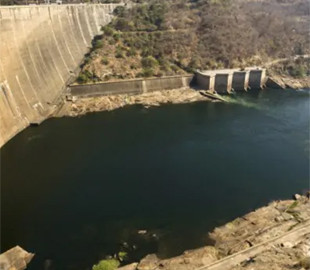
The largest lake in the world, Lake Kariba, covers two countries — Zambia and Zimbabwe. More than 30,000 people and thousands of animals were relocated for its creation.
It took five years to fill the largest artificial lake in the world. It covers two countries. It was reported on October 15 in the edition of Express.
Lake Kariba is located between Zambia and Zimbabwe in southern Africa and covers an area of 3,460 square kilometers. The reservoir was formed after the Zambezi River was dammed in a gorge where it narrowed between hills more than 400 kilometers below Victoria Falls. The distance upstream to the mouth of the river in the Indian Ocean — more than 1,300 kilometers.
The reservoir of Lake Kariba reaches 70 cubic kilometers. It stretches over 223 kilometers in length, and up to 40 kilometers — in width The average depth is 28 meters, the maximum — approximately 97 meters.
Lake Kariba began to be filled in 1958 and was completed in 1963. The process took a total of five years. It is considered the world's largest artificial lake by volume. This mass of water is believed to have caused induced seismicity, with more than 20 earthquakes of five or higher on the Richter scale recorded.
200% Deposit Bonus up to €3,000 180% First Deposit Bonus up to $20,000The city of Kariba was built on the dam of the lake for builders. Some settlements in Zimbabwe had to be expanded to accommodate IDPs due to the damming of the river. The dam across the Zambezi was built from November 1956 to 1959. Its height reaches 127 meters, and its length — almost 579 meters.
This dam supplies approximately 6.7 billion kilowatt-hours of electricity per year. For its construction, more than 30,000 local residents were relocated and thousands of wild animals were evacuated as part of “Operation Noah”.
At first, the project was unpopular, but everything changed when it came to fruition. After the dam was built, the local people got cheap electricity that powered the copper industry in Zambia.
The water that filled the lake contained a lot of nutrients due to the decaying and submerged vegetation. This formed a thick layer of fertile soil at the bottom, and as a result, the ecology of the reservoir — bright There are various types of fish, including sardine-like capents, Nile crocodiles and hippos. Cormorants and other waterfowl can be seen along the shores, as well as elephants, lions, cheetahs, leopards and buffalo.
Both Zambia and Zimbabwe have taken up tourism development. However, after severe droughts, the lake's water reserves available for electricity generation fell by 7.7%. As a result, Zambia faced a 21-hour blackout due to the hydroelectric plant's second shutdown in its lifetime.

